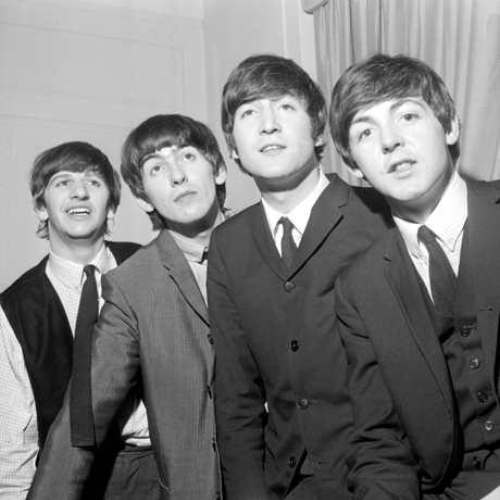The Rolling Stones facts: Members, feuds, songs and albums of The World's Greatest Rock and Roll Band
3 July 2024, 13:27

Into their 60th year and beyond, we take a closer look at the original bad boys of rock.
Listen to this article
The Rolling Stones are rock 'n' roll's greatest survivors.
There have been feuds, deaths and departures, but through it all they have remained, and continue to tour around the world and even release new music into their seventh decade.
- The Beatles vs The Rolling Stones – in their own words
- The Rolling Stones logo: Who designed the iconic tongue and lips image?
- Listen to the Gold 60s Live Playlist on Global Player, the home of Gold
The release of Hackney Diamonds had the band back in the charts with newly-written music for the first time in nearly two decades, etching yet another chapter in their remarkable story.
Summing up 60+ years of non-stop rock and roll is no easy task, but if you want the all-you-need-to-know facts about The Rolling Stones, we've got you covered.
Read on for the beginner's guide to The World's Greatest Rock and Roll Band.
How and when did The Rolling Stones get together?

The first time any of the Stones got together was in 1950, when Mick Jagger and Keith Richards were at school together in Dartford.
They knew each other, but weren't particularly close. That all changed on one fateful day, on October 17, 1961. Jagger, who had at that point moved five miles away to Wilmington, bumped into Richards on Platform 2 at Dartford railway station.
Jagger was wielding a couple of records by Chuck Berry and Muddy Waters, artists who his own garage band with Dick Taylor had been covering, alongside the likes of Bo Diddley, Howlin' Wolf and Little Richard.
Knowing immediately they were kindred spirits, they sparked an almost immediate relationship that has lasted to this day.

Jagger, Richards, and Taylor joined forces with Alan Etherington and Bob Beckwith as the Blues Boys.
They met up with the members of a group called Blues Incorporated at Ealing Jazz Club, with that band including slide guitarist Brian Jones, keyboardist Ian Stewart, and drummer Charlie Watts.
Both groups dissolved/melded somewhat, and a lineup emerged of Jagger, Richards, Jones, Stewart and Taylor with Tony Chapman on drums.
The Rollin' Stones (as Jones, Jagger, Richards, Stewart, and Taylor) played their first show on July 12, 1962 at the Marquee Club in London
Bill Wyman replaced Taylor on bass by the end of 1962. By January 1963, Watts joined as a permanent drummer.
Who has been in The Rolling Stones over the years?

As we've already touched on, the very early Rolling Stones lineup took a little while to settle.
Let's deal with the early members who didn't stick around first.
Dick Taylor was an early bass player, as were Colin Golding and Ricky Fenson.

Crossfire Hurricane – Brett Morgen’s Rolling Stones movie trailer
On drums, Mick Avory is definitely worth mentioning, even though he only did a few rehearsals because he became the drummer in The Kinks. Tony Chapman and Carlo Little also had some time with the band.
But the first "proper" lineup of The Rolling Stones was as follows:
Mick Jagger - vocals
Keith Richards - guitar
Brian Jones - guitar and other instruments
Ian Stewart - piano
Bill Wyman - bass
Charlie Watts - drums
Poor Stewart was nudged out of the "official" lineup by manager Andrew Loog Oldham pretty early on, but still played with the group on the road and stayed as their road manager.
And in 1969, everything began to change.

Bill Wyman Documentary ‘The Quiet One’ Trailer Premieres
Founding member and early leader Brian Jones was axed from the band in June that year, due to his heavy drug use affecting both his work with the band and giving him visa problems. He died a few weeks later on July 3, 1969 in the swimming pool at his home.
He was briefly replaced by Mick Taylor, who stuck around for four short but very important years until his departure in 1974. Taylor was replaced by ex-Faces man Ronnie Wood.
Bill Wyman left the band in 1993, and he's never been officially replaced as a formal member, though Darryl Jones has been the band's regular bassist on the road and in the studio since then.
Charlie Watts died in August 2021, and while he too was not officially "replaced", friend and regular band associate Steve Jordan has stepped in both on tour and on record.

There have also been plenty of regular Stones players who didn't ever earn "official" status, but were pretty much members in our eyes.
Too many to mention them all, but we'll give a special shoutout to Bobby Keys (sax) and Jim Price (trumpet and trombone), as well as Nicky Hopkins on piano and ex Fifth Beatle Billy Preston on keyboards.
Others who need a shoutout include ex Small Faces and Faces man Ian McLagan, regular backing singer Lisa Fischer, and multi instrumentalist and one-time Beach Boy Blondie Chaplin.
How did The Rolling Stones get their name?

"A rolling stone gathers no moss" goes the proverb, which dates in some form back to about 50 years before Jesus was born, and in its English form it gained currency in the 1500s and grew in popularity in the 20th century.
In 1950, Muddy Waters recorded the song 'Rollin' Stone'.
The story goes that when a journalist from Jazz News was on the phone asking Brian Jones about the group, Brian's eyes wandered to a copy of a Waters album and the tracklisting on it.
They first played as The Rollin' Stones, which definitely adds to the evidence that Muddy was the inspiration, and the band added that final G a little while afterwards.
Who designed The Rolling Stones' iconic lips and tongue logo?

It's maybe THE most recognised image in rock and roll, and if you want a deep dive on the history of the classic tongue and lips logo, you can read that all right here.
To summarise though... the Stones started using the log in 1970 for their European Tour, stuck on the sleeve for Sticky Fingers, and has been pretty ubiquitous on Stones merch and products since then.
It was suggested by Mick Jagger himself, designed John Pasche and/or Craig Braun and/or Ernie Cefalu, with maybe a cheeky assist from Beatles illustrator Alan Aldridge.
As for the confusing story behind it... John Pasche came up with the tongue and lips, but Craig Braun's team tweaked it from a low-quality fax, but Ernie Cefalu claims that he was the one who pitched the idea to Craig and executed the finished design, apparently before Pasche did his version.
Alan Aldridge's illustration for 'Day Tripper' in an illustrated book of Beatles lyrics has a woman licking an ice lolly, but her lips and tongue do look pretty familiar.
Have The Rolling Stones ever split up?

Nope. Despite some departures, deaths, fallings out, feuds, breaks and solo albums over the years, there has never been a moment where The Rolling Stones have "broken up".
It was in the 1980s where there core, ever-present duo of Mick Jagger and Keith Richards seemed to be squabbling most of all.
It was around this time where Richards started referring to Mick as "Brenda", or "Her Majesty", as a nod to his supposed diva behaviour.
Mick released his first solo album She's the Boss in 1985 and follow-up Primitive Cool in 1993, with third album Wandering Spirit coming in 1993.

Mick Jagger : Memo From Turner (Version One)
For his part, Keith Richards released his own Talk is Cheap in 1988, followed by Main Offender in 1992.
The relationship improved as the '90s went on, though Richards' candid and not always kind 2010 memoir Life caused a bit of friction.
It probably didn't help that Keith referred to Jagger's 2001 solo effort Goddess in the Doorway as Dogs**t in the Doorway. Ooof.
But they kissed and made up, and are not only still touring together, but also got back in the studio as as songwriting partners to make 2023's Hackney Diamonds comeback.
Who writes the songs in The Rolling Stones?

In their earliest days the Rolling Stones were very much a covers band, with their set focused on Brit takes on the R&B and blues music they loved.
Having worked briefly as a promoter for The Beatles, Oldham saw the writing on the wall and, after axing Ian Stewart and sidelining Brian Jones, pushed Mick and Keith to write their own songs.
He invited John Lennon and Paul McCartney to the studio with the Stones where they gifted them 'I Wanna Be Your Man', further lighting a fire under Jagger and Richards.
The number of songs written by the Jagger/Richards partnership (who also called themselves "The Glimmer Twins" when they were producing) slowly crept up.
There were songs here and songs there, including most of their biggest and best singles, and 1965's Aftermath was a watershed, with all 14 songs being original compositions, and all 14 songs written by Jagger and Richards.
What are The Rolling Stones biggest songs and albums?

The Rolling Stones have released 24 albums in the UK and well over 100 singles, however you count them.
Our picks for their greatest albums all come from their imperial phase from the mid-1960s to 1970s, when Jagger and Richards were churning out classic after classic and classic.
The best-of-the-best are Aftermath, Between the Buttons, Let It Bleed, Sticky Fingers and Exile on Main St.
Beyond that ever-so-purple patch, we'll give a shoutout to 1981's Tattoo You, which was made up of outtakes from the 1970s, and also give a shoutout to 2005's A Bigger Bang and 2023's Hackney Diamonds.
How many records have The Rolling Stones sold?

The short answer is a HELL of a lot. Unlike fellow rock megastars like The Beatles or Pink Floyd, the Stones don't just have a back catalogue that continues to shift copies over half a century after the original records were released (and, in expanded editions and new formats, often to the same people).
They have slowed down of late, certainly, but they've still released three studio albums in the 21st century and are talking seriously about a fourth.
With the caveat that these numbers get increasingly difficult to measure in the digital age, estimates suggest the Rolling Stones have sold around 250 million albums, putting them in the top 10 best-selling artists of all time.






















